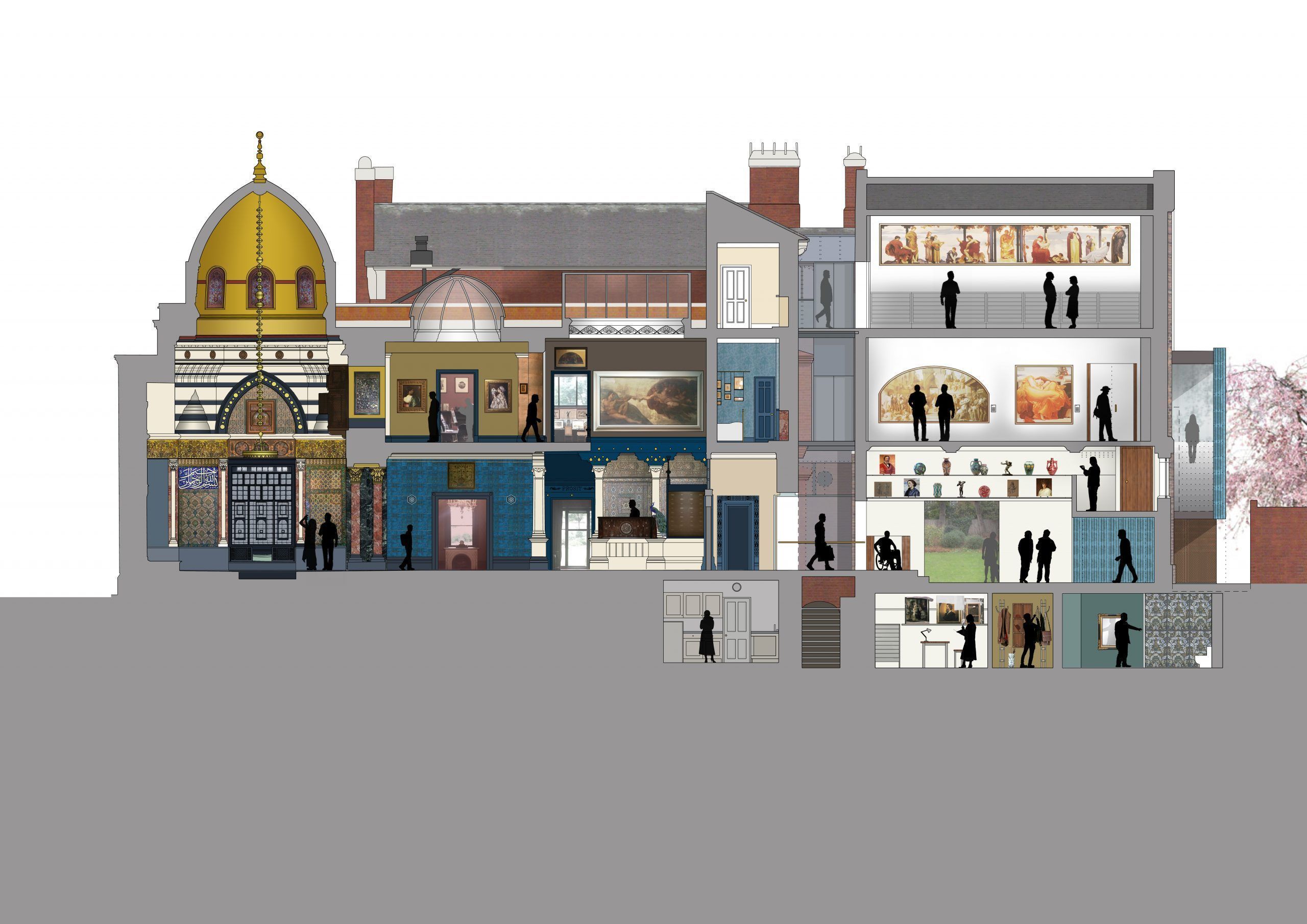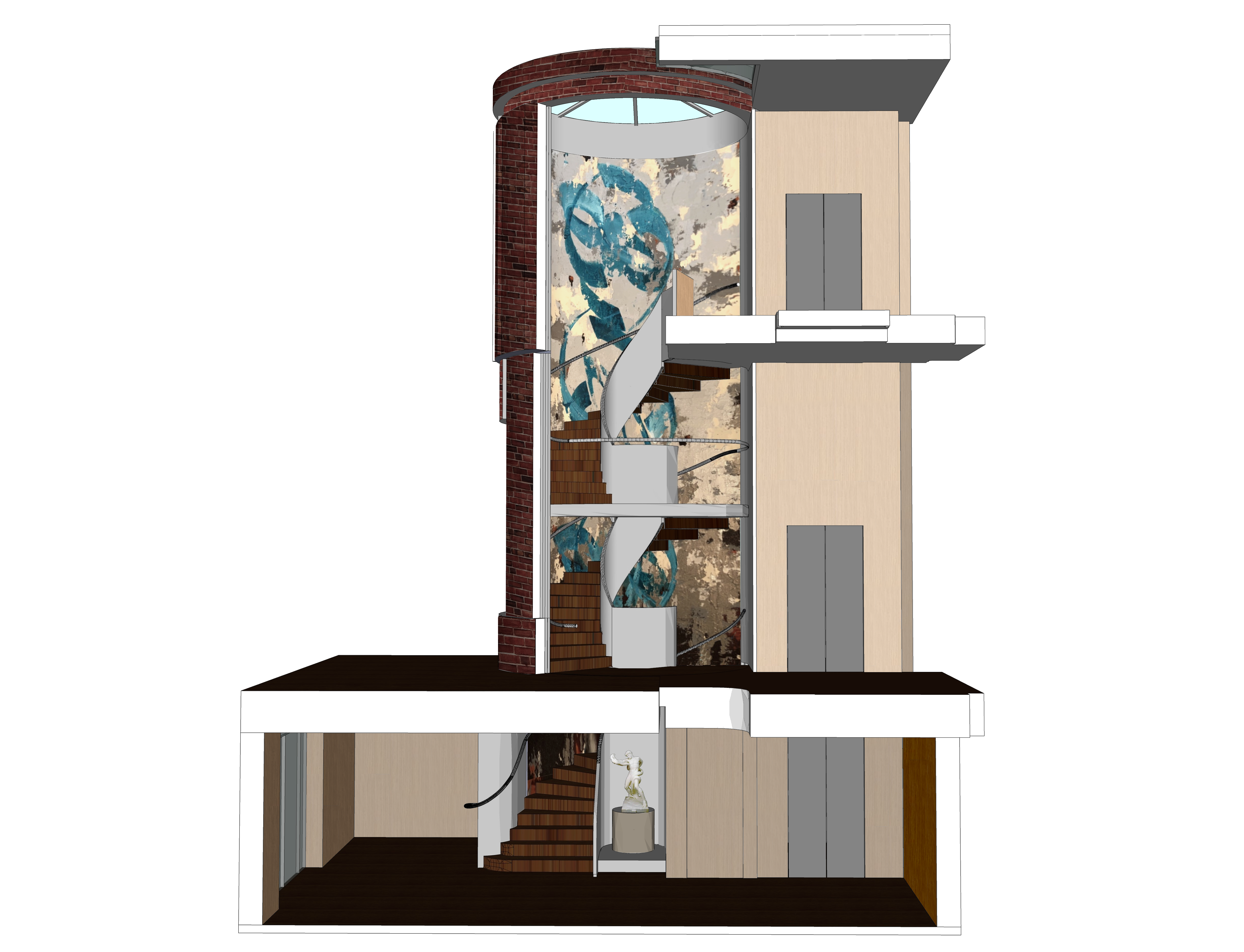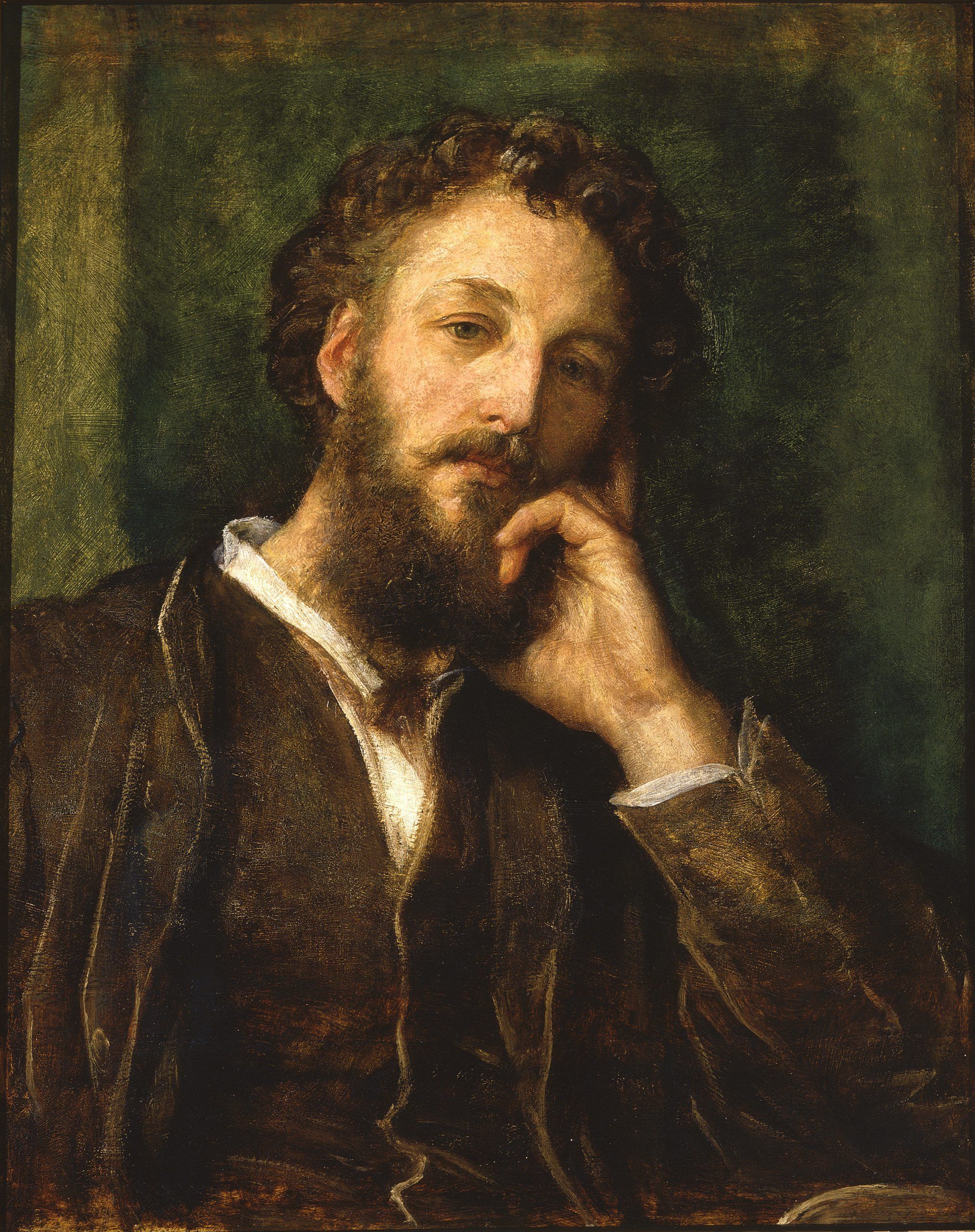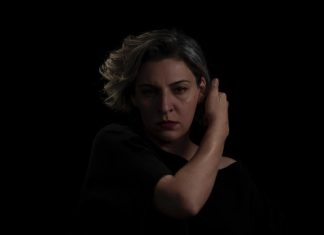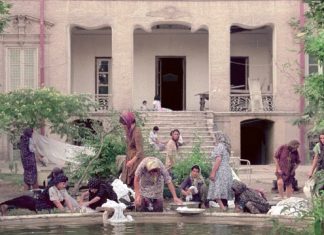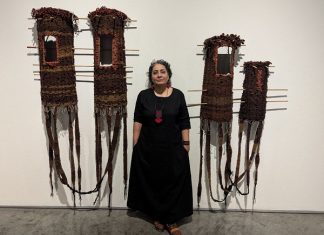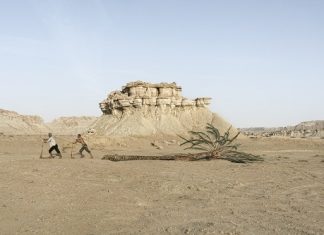By Rawaa Talass
Sometime in 2022, the Iranian artist Shahrzad Ghaffari will become the first contemporary artist to produce work for the interiors of the Leighton House Museum, the former London home and atelier of the Victorian artist Lord Frederic Leighton, who lived there for three decades. The museum is located in Holland Park.
As part of the museum’s redevelopment plans — which involve adding new exhibition spaces, visitor facilities and collections storage — Ghaffari has been commissioned to create a permanent, 11-meter-high mural called “Oneness” that will decorate the wall around the museum’s helix-shaped staircase.
[aesop_image img=”https://kayhanlife.com/wp-content/uploads/2021/12/Shahrzad-portrait.jpg” panorama=”off” credit=”Shahrzad Ghaffari. ” align=”center” lightbox=”on” captionsrc=”custom” captionposition=”left” revealfx=”off” overlay_revealfx=”off”]
“We arrived at Shahrzad, and immediately, her proposal just seemed absolutely to hit all the things that we wanted to do,” said Leighton House Museum’s longtime senior curator Daniel Robbins in an interview.
“At one level, her title ‘Oneness’ worked on this idea of the oneness of art, architecture, and design being connected and interrelated in a very powerful way,” Robbins said. “There’s also an obvious point of ‘oneness’, a sense of unity and commonality between people and she extended that, which we particularly liked.”
The museum’s partly Middle Eastern interior is familiar to Ghaffari, who was born and raised in Tehran. She remembered the first time she stepped into London’s Leighton House Museum and its richly embellished ‘Arab Hall,’ dating back to the mid-19th century. It was a surprising sight inside a red-brick Victorian building: a shiny golden dome over tiled walls of vivid turquoise blue, Arabic calligraphy, and abundant sceneries of birds and foliage — an unlikely yet harmonious marriage of different cultures.
“It touched me, because I felt very connected to the place. There are these two wings of ‘East’ and ‘West’ under one roof. They don’t clash with each other. They’re peacefully there and they co-exist,” she told Kayhan Life from her base in Vancouver.
While the Arab Hall is located at the western extremity of the house, the staircase stands at the opposite end, in the new wing, as an architectural detail that continues a visual conversation. “The staircase’s interior is not necessarily quite a response to the Arab Hall, but this new piece of art could continue that aspect of the house combining elements of our show of diversity,” said Robbins.
Ghaffari’s vision stood out among some 50 submissions for the new space, which were examined by a panel of architects, trustees, and experts from the museum.
Visually, her choice of shimmery, metallic material reflects the house’s varied color scheme. “As you climb the stairs, it starts with more earthy tones and then lightens as you reach the top of it, and above, there’s a great big skylight,” Robbins noted.
Inspired by the blue tones of the Arab Hall’s tiles, “Oneness” is also a nod to Ghaffari’s Persian heritage.
The artist said she was drawn to a verse by the ancient Persian poet Rumi: “One I seek, one I know, one I see, one I call,” which will be represented, not in the manner of pure Farsi calligraphy, but in a gestural and abstract way. “I treat them just like strokes. They give me the power to show a certain form. They dance across my canvas,” she explained.
Leighton, who was artistically trained in Italy and France, started constructing in 1864 his Holland Park house, when he was at the top of his game. During the same year, he was appointed an associate of London’s prestigious Royal Academy of Arts, and later became its president. By that point, one of his paintings was purchased by none other than Queen Victoria, who toured Leighton’s lavish house, which contained just one modest bedroom.
Thanks to his “palace of art,” a demonstration of his professional success, Leighton enjoyed something of a celebrity status. “It’s safe to say all the kinds of prominent artists of his day were entertained at the house at different times,” Robbins explained.
During the 1860s and 1870s, Leighton traveled to the Orient, to places like Turkey, Egypt, and the Syrian capital of Damascus, where he amassed a huge quantity of beautiful ceramics and Iznik ceramic tiles, as well as metalwork and some sixty rugs. Constructing the Arab Hall started in 1877, although it is not entirely clear why he built it in the first place.
Aside from serving as a place of entertainment for guests after dinner, Leighton House was eventually used to display Lord Leighton’s tiles collected from Syria, Turkey and Iran, some featuring elaborate Quranic verses.
The aesthetics of the Arab Hall, designed by the British architect and professor George Aitchison, were influenced by Palermo’s ‘La Zisa’ palace. Built in the 12th century by Muslim workers, the palace combined visual elements from Norman and Islamic architecture.
Ghaffari’s commission was supported by the UK charity The Art Fund, which raises funds through public donations. A total of 26,050 pounds were raised to bring “Oneness” to life.
Despite complications caused by the pandemic, Ghaffari is scheduled to paint the mural in London in January 2022 and the museum will likely open its doors again in late spring-early summer 2022.
“I’m very honored and looking forward to it,” she said. “Coming from that part of the world and being a woman artist, it’s wonderful. I feel a lot of responsibility; I have to bring that part of me, which is essential to this work as well.”

